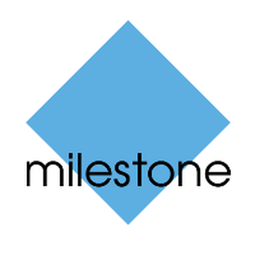
Technology Category
- Functional Applications - Computerized Maintenance Management Systems (CMMS)
- Sensors - Utility Meters
Applicable Industries
- Buildings
- Electrical Grids
Applicable Functions
- Facility Management
- Maintenance
Use Cases
- Inventory Management
- Smart Parking
Services
- Cloud Planning, Design & Implementation Services
- System Integration
The Customer
Electra Ltd
About The Customer
The customer in this case study is the Electra group of companies. They are a developer of high-rise commercial towers intended for high-end customers. They have recently completed the construction of five new towers, all of which are installed with IoT devices, smart power and water management, smart lighting, smart cleaning systems, controllable machines and sensors, security and safety systems, parking and gate systems. The company needed a solution that could integrate, control, and monitor all their towers remotely from their main HQ, while also offering advanced high-level services for the tower’s residents and offices.
The Challenge
Electra group of companies, a developer of high-rise commercial towers, recently completed the construction of five new towers. These towers are equipped with IoT devices, smart power and water management systems, smart lighting, smart cleaning systems, controllable machines and sensors, security and safety systems, parking and gate systems. The challenge was to find a cloud-based, smart facility management system that could integrate, control, and monitor all these towers remotely from their main HQ. The system needed to be flexible and generic for all types of systems installed and should have customizable integration workflows and rules for automating all subsystems’ control and operations. Additionally, the solution should incorporate a mobile application for all facility management staff to receive technical alarms and faults, as well as control smart elements directly from the phone. The solution should also have a visitor management system built-in and assist in cutting down facility management costs, time of response to faults, and reduce utility charges.
The Solution
The solution was the Octopus Smart Campus System, a cloud-hosted solution that can run locally at each facility but can also be managed from the top hierarchy site of the company’s HQ. It is an open architecture API server that can seamlessly integrate with any IoT device, controllable systems, and SCADA, and is vendor agnostic. The system has an advanced integrations rule engine for easily defining rules, correlations, workflows, and automatic actions and schedules. It also has advanced incident and fault management with response procedures for facility management to deal with every scenario. The system includes a dynamic 3-D plan of the facility outside and inside with sensors location and control in 3-D. The Octopus system also includes a visitor management system for inviting and registering all visitors and suppliers and issuing them a badge, a smart parking management system, and a mobile application platform for connecting all the staff of each facility to the system.
Operational Impact
Quantitative Benefit

Case Study missing?
Start adding your own!
Register with your work email and create a new case study profile for your business.
Related Case Studies.

Case Study
Energy Saving & Power Monitoring System
Recently a university in Taiwan was experiencing dramatic power usage increases due to its growing number of campus buildings and students. Aiming to analyze their power consumption and increase their power efficiency across 52 buildings, the university wanted to build a power management system utilizing web-based hardware and software. With these goals in mind, they contacted Advantech to help them develop their system and provide them with the means to save energy in the years to come.

Case Study
Intelligent Building Automation System and Energy Saving Solution
One of the most difficult problems facing the world is conserving energy in buildings. However, it is not easy to have a cost-effective solution to reduce energy usage in a building. One solution for saving energy is to implement an intelligent building automation system (BAS) which can be controlled according to its schedule. In Indonesia a large university with a five floor building and 22 classrooms wanted to save the amount of energy being used.

Case Study
Powering Smart Home Automation solutions with IoT for Energy conservation
Many industry leaders that offer Smart Energy Management products & solutions face challenges including:How to build a scalable platform that can automatically scale-up to on-board ‘n’ number of Smart home devicesData security, solution availability, and reliability are the other critical factors to deal withHow to create a robust common IoT platform that handles any kind of smart devicesHow to enable data management capabilities that would help in intelligent decision-making

Case Study
Hydro One Leads the Way In Smart Meter Development
In 2010, Ontario’s energy board mandated that time-of-use (TOU) pricing for consumers be available for all consumers on a regulated price plan. To meet this requirement, Hydro One needed to quickly deploy a smart meter and intelligent communications network solution to meet the provincial government’s requirement at a low cost. The network needed to cover Hydro One’s expansive service territory, which has a land mass twice the size of Texas, and its customers live in a mix of urban, rural, and remote areas, some places only accessible by air, rail, boat or snowmobile. Most importantly, the network needed to enable future enterprise-wide business efficiencies, modernization of distribution infrastructure and enhanced customer service. To meet these needs, Hydro One conceptualized an end-to-end solution leveraging open standards and Internet Protocols (IP) at all communication levels. The utility drew upon industry leaders like Trilliant to realize this vision.

Case Study
Selling more with Whirlpool
Whirlpool wanted to add connectivity to appliances and transform the company's relationship with customers. Traditionally, Whirlpool interaction with customers was limited to purchases made once every ten years. Connected washer and dryers provide exciting new features like remote management of start times and inter-machine communication.




